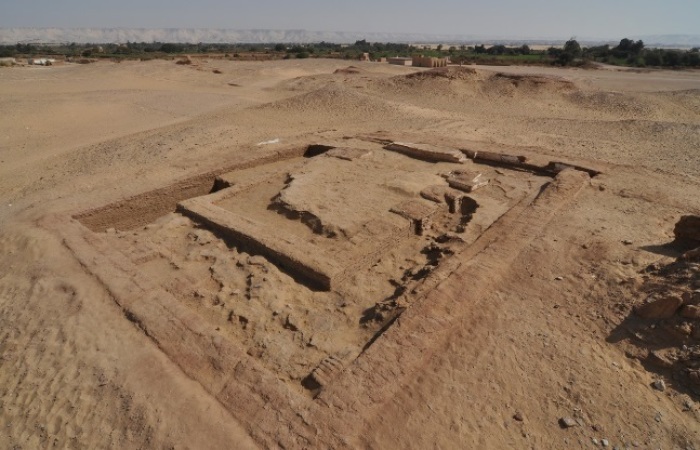Archaeologists find 'surprising' discoveries at ancient Egyptian church

An archaeological team’s excavation of an ancient city has uncovered “surprising” revelations about an early Christian church in Egypt, specifically, the discovery of 17 human remains and the story the bodies tell.
Experts uncovered the ruins of a church, dated to around the mid-fourth century, during an ongoing archaeological excavation of Trimithis (also known as Amheida), an ancient city near the western edge of the Dakhla Oasis in the western desert.
The city was once a settlement during Egypt’s Roman period, which started in 30 B.C. and lasted until the Muslim conquest in 641 A.D. New York University’s Institute for the Study of the Ancient World leads the international research team.
According to a recent update from NYU, excavation work in Trimithis resumed in 2023 following a seven-year hiatus, a pause exacerbated by the COVID-19 pandemic.
Experts have continued studying various buildings, inscriptions and bathhouse facilities.
For Project Director David Ratzan, who also serves as the head of ISAW’s library, the church is one of the most “exciting” discoveries.
While believers gathered together and worshipped before the Roman Emperor Constantine made it illegal to persecute Christians, Ratzan noted that the design of this particular church stands out.
“In any case, churches in this style, based on the Roman basilica, a type of public building dedicated to administration and law, date back only to a generation or two before the church at Trimithis, since only then did Christians feel sufficiently confident to build proudly public spaces of worship,” Ratzan stated in the update.
Even more surprising to experts than the design was the discovery of 17 bodies buried in the church. Twelve of them were buried in crypts underneath what would have been the altar and pastophoria or service rooms.
Scientists did not expect to learn that seven of the bodies buried in the crypt were female, and eight were children or adolescents, including infants. It is possible that there are more women among the remains, but it is hard to determine a person’s sex from skeletons at a certain age.
“While there is good evidence that women were important in early Christianity, it was still surprising to find such a concentration of women and children buried in this church, since Roman Egypt was a patriarchal society,” Ratzan stated. .
While the excavation of the church is complete, the project director said that the team still has questions, such as the relationships of the buried individuals and whether they represented most or different types of the Christian community in Trimithis.
“Were these people related to clergy or prominent patrons who helped build and maintain the church?” Ratzan asked. “Are crypts like this typical of churches of this period, or idiosyncratic to the oases?”
Ratzan confirmed that the team is still studying the 17 human remains discovered in a statement Newsweek published last week. Experts are unable to conduct DNA tests at the moment. They have to wait until the excavation of other churches, with Ratzan speculating that there are indeed more churches in Trimithis.
“For now, though, this is an exciting discovery and one that we expect will make a significant impact on the discussion of the history of early Christianity,” he added.
“And we still have one volume to publish on the church that we are working on now: the small finds and the forensic anthropology of the skeletons.”
Samantha Kamman is a reporter for The Christian Post. She can be reached at: [email protected]. Follow her on Twitter: @Samantha_Kamman




























